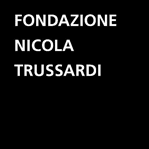Michael Elmgreen & Ingar Dragset
Short Cut
Ottagono, Galleria Vittorio Emanuele, Milan
May 7 – June 4, 2003
Project
With a piece in which a white car towing a trailer emerges from a long imaginary journey to the center of the earth out of the floor of the central octagon in Galleria Vittorio Emanuele, Michael Elmgreen & Ingar Dragset make a unique incursion into the daily life of Milan and its history, reinterpreting one of the city’s iconic landmarks.
Whether discreet or dramatic, this duo’s temporary installations have always been exercises in sleight-of-hand that transform urban space into an elastic, flexible structure. Their works are a fusion of the ancient and the modern, the monumental and the ephemeral, the static and the dynamic: art galleries suspended from balloons, diving boards for plunges into the imagination, unstable floors and upside-down rooms, exploding boxes, impossible staircases and doors hiding unfamiliar labyrinths. As engineers of possibility, Michael Elmgreen & Ingar Dragset dig secret passages to escape the contemporary obsession with order, cleanliness, and purity.
A metaphor for global tourism, but also a symbol for the precarious nature of today’s world, the installation Short Cut (2003) describes a universe in movement that travels along endless, unpredictable paths towards fanciful destinations. For their first public project in Italy, the two artists also chose to tackle local stereotypes: the car is a run-of-the-mill white Fiat Uno with Naples plates, and on the dash one can see a map of Rimini. The Turin-based automobile manufacturer—going through a serious crisis at the time of the exhibition—and the seaside resort on the Adriatic coast are both classic images of Italian popular culture. The first impression of passers-by is that they have come across an accident scene: the floor is cracked and the wheels of the car are stuck among shards of the mosaic. Short Cut sparks reactions and debate throughout the city; animated clusters of people gather around the installation, and the national and international press publishes stories with photos of the piece. On the morning that the exhibition opens, the traffic police leave a ticket on the car for parking in an unauthorized area, and two members of the city council ask for it to be removed; to demonstrate their disapproval, they stage a protest in Galleria Vittorio Emanuele, eating a pizza next to the installation.
Nicknamed “the city’s parlor”, the quintessential strolling and gathering place for all tourists and residents, the octagon at the center of Galleria Vittorio Emanuele is the symbolic heart of Milan, a core pulsing with energy. Located in the middle of the arcade that connects Piazza della Scala to Piazza del Duomo, it is topped by a soaring transparent dome that creates a monumental covered plaza. Inspired by the boldest European architectural experiments with iron and glass, such as London’s Crystal Palace, built in 1851, Galleria Vittorio Emanuele was designed in 1864 by Giuseppe Mengoni, chosen from among 176 architects who took part in the international competition launched by the City; it was finished in 1878. Damaged by Allied bombing raids on the nights of August 13 and August 15, 1943, few of the original establishments are left in the Galleria: the historic Bar Campari, Bar Biffi, the former Baldini e Castoldi bookshop designed by Franco Albini (radically transformed, now the Libreria Concessionaria IPZS) and the Savini restaurant, whose tables were the starting point for the Futurists’ festive, irreverent forays in the early 20th century. Celebrated by this movement as a symbol of the modern city—and even immortalized in Umberto Boccioni’s famous painting Rissa in Galleria (1910)—with Short Cut, the arcade once again becomes an ideal stage for contemporary art.
Michael Elmgreen was born in Copenhagen, Denmark in 1961, while Ingar Dragset was born in Trondheim, Norway in 1969. They both live and work in Berlin, where they have been collaborating since 1995. The duo has taken part in major contemporary art events, exhibiting their work at international institutions such as the Museum of Contemporary Art in Chicago (2007 and 2005), the Serpentine Gallery in London (2006), Tate Modern in London (2004), Museum für Moderne Kunst in Frankfurt (2003), Palais de Tokyo in Paris (2002 and 2001) and Musée d’Art moderne de la Ville de Paris (1998). Nominated in 2000 for the New York Guggenheim’s Hugo Boss Prize, they were also featured at the 25th Bienal Internacional de São Paulo (2002), as well as the 7th International Istanbul Biennial (2001). Their work can be found in major collections, including those of the Louisiana Museum for Modern Art in Denmark, Moderna Museet in Stockholm, Malmö Konstmuseum, Hamburger Bahnhof in Berlin, and CGAC in Santiago de Compostela. In 2009, they represented Scandinavia (Denmark, Finland, Norway, Sweden) at the Venice Biennale’s 53rd International Art Exhibition, curating the project The Collectors, in which they reinvented the national pavilion, turning it into the home of an imaginary gay collector filled with works by 24 international artists.
- appeared overnight in the Galleria de Vittorio Emanuele II shopping mall, Milan, Italy. © Ian Cumming / Axiom
















